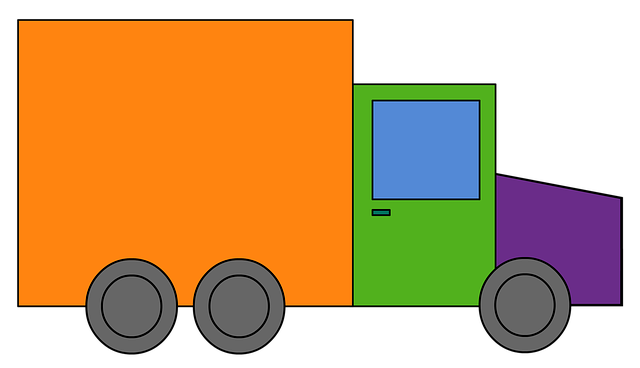Learn how to register your car in California with our comprehensive guide. Before visiting the DMV, understand the eligibility requirements for car registration, gather all necessary documents, and perform a Vehicle Identification Number (VIN) verification. We’ll walk you through the step-by-step process, cover additional considerations, and answer frequently asked questions. Ensure a smooth experience with our expert tips on using a dmv vin verifier.
- Understand Eligibility Requirements for Car Registration in California
- Gather Necessary Documents Before Visiting the DMV
- How to Perform a Vehicle Identification Number (VIN) Verification
- The Step-by-Step Process of Registering Your Car at the DMV
- Additional Considerations and Frequently Asked Questions
Understand Eligibility Requirements for Car Registration in California

Before registering your car in California, it’s crucial to understand who is eligible and what steps are required. In the Golden State, all vehicles, regardless of age, must meet specific criteria to be road-ready and legally registered. The primary authority for this process is the Department of Motor Vehicles (DMV). One essential step involves utilizing a DMV VIN verifier to check the vehicle’s history and ensure it complies with environmental standards, among other regulations. This verification process includes a thorough inspection, which can often be conveniently completed using a mobile VIN verifier.
Additionally, out-of-state vehicles entering California may face unique challenges, including requirements for smog tests or emissions inspections. A comprehensive understanding of these eligibility requirements is paramount to streamline the registration process and avoid potential penalties.
Gather Necessary Documents Before Visiting the DMV

Before visiting your local California DMV office to register a car, it’s crucial to gather all necessary documents. This process will be smoother if you have the following in hand: proof of ownership (like a bill of sale or previous registration), a completed Vehicle Registration Application form, and your driver’s license or ID card. Additionally, for most vehicles, you’ll need to provide a valid emissions test certificate obtained from a certified testing station.
One essential step that can simplify this process is securing a mobile vin inspection or using a DMV VIN verifier service. This involves checking the vehicle identification number (VIN) against state records to ensure its authenticity and history, which can save you time and effort during registration. A mobile vin inspection allows for convenience as it can be conducted before or during your DMV visit, ensuring all aspects of car registration are handled efficiently.
How to Perform a Vehicle Identification Number (VIN) Verification

Performing a Vehicle Identification Number (VIN) verification is a crucial step in registering your car in California. This process ensures that the vehicle’s history and specifications match the information provided by the manufacturer. You can verify the VIN using a DMV-approved vin verifier, either online or at a designated location. Many individuals opt for a mobile vin verifier or mobile vin inspection to save time and effort, as these services allow you to conduct the check from the comfort of your home or even while waiting in line at the DMV.
To initiate the verification, you’ll need to obtain the VIN from your car’s registration documents or look it up on the vehicle’s frame or engine. Once you have this number, use a trusted mobile vin verifier app or website to cross-reference its details with state records. The results should match the vehicle’s year, make, model, and other specifications. If discrepancies are found, it could indicate potential issues like odometer rollbacks or stolen vehicles, which may impact your registration process.
The Step-by-Step Process of Registering Your Car at the DMV

Registering a car in California is a straightforward process that involves several steps to ensure your vehicle complies with state regulations. Here’s a step-by-step guide on how to register your car at the DMV (Department of Motor Vehicles).
1. Gather Required Documents: Before heading to the DMV, collect essential documents such as proof of identity, vehicle title, proof of insurance, and a valid driver’s license. If you’re transferring ownership, you’ll also need a Bill of Sale or a completed Transfer of Ownership form. Don’t forget your mobile vin verifier app for quick and easy verification of your Vehicle Identification Number (VIN).
2. Complete the Application: Once at the DMV, locate the registration counter and request a Form MV-56 (Application for Title and Registration). Fill it out accurately, ensuring all information is correct. You’ll need to provide details about your vehicle, including its make, model, year, and VIN, which can be quickly verified using a mobile vin inspection tool. Make sure to sign the form in the designated area.
3. Submit Fees: Along with your completed application, you’ll need to pay the required registration fees. These fees vary based on factors like vehicle type and weight. You can typically pay by cash, check, or debit/credit card. After submission, the DMV will process your application and issue a registration sticker for your vehicle’s windshields.
Additional Considerations and Frequently Asked Questions

When registering your car in California, there are a few additional considerations to keep in mind. One important step is ensuring that the Vehicle Identification Number (VIN) is accurate and verified. The DMV offers a VIN verifier tool, which allows you to cross-reference the VIN with official records to guarantee its legitimacy. This is crucial for preventing fraud and ensuring the safety of your purchase.
Frequently Asked Questions include inquiries about accepting out-of-state titles, understanding fees, and what documentation is required. For instance, if you’re transferring a vehicle from another state, you’ll need to provide proof of the previous registration and a bill of sale showing the transfer of ownership. Additionally, the DMV offers mobile VIN verification services for added convenience, allowing you to complete your car registration process seamlessly.
Registering a car in California involves understanding eligibility requirements, gathering essential documents, and successfully completing a VIN verification process. By following these steps and ensuring all necessary information is accurate, you can efficiently navigate the car registration process at the DMV. Remember to check the ‘Additional Considerations’ section for helpful FAQs and ensure your vehicle complies with state standards before initiating the registration. Utilize a trusted dmv vin verifier to streamline the verification step, making the entire experience less cumbersome.
